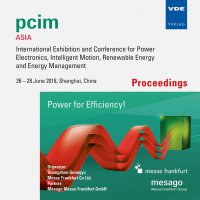High Power Eelectronics: Cleaning Requirements for Improved Efficiency and Reliability
Conference: PCIM Asia 2018 - International Exhibition and Conference for Power Electronics, Intelligent Motion, Renewable Energy and Energy Management
06/26/2018 - 06/28/2018 at Shanghai, China
Proceedings: PCIM Asia 2018
Pages: 7Language: englishTyp: PDF
Personal VDE Members are entitled to a 10% discount on this title
Authors:
Kucharek, Thomas (ZESTRON Europe, Germany)
Parthasarathy, Ravi; Patel, Jigar (ZESTRON Americas, USA)
Ji, Jerry (ZESTRON, China)
Abstract:
Today, power modules are widely used in high power applications such as hybrid electric vehicles, solar inverters, medical equipment, and UPS (Uninterruptable Power Supplies) devices. For energy efficiency reasons, high power devices such as MOSFETs, IGBTs and DCBs are subjected to increased performance requirements with greater packaging density and involves various metal material mix. Moreover, they oftentimes are subjected to elevated temperature and power cycling environments, extremely high current flow and extreme thermal transfer requirements. Accordingly, even the slightest contaminants remaining on the surface will impede the reliability required in these critical and highly sensitive applications. During the power module manufacturing process, contaminants including oxide films and flux splatter remain on the substrate and chip surfaces. In order to guarantee the highest process reliability, these contaminants must be completely removed from the surfaces through a cleaning process. There are several process flows for power module production and thus various process steps that require cleaning. Although the production process may vary based on the application, design and functionality of the power devices, typically cleaning is required following die attach to copper substrate prior to wire bonding and after heat sink soldering prior to further processing such as bonding and molding.


